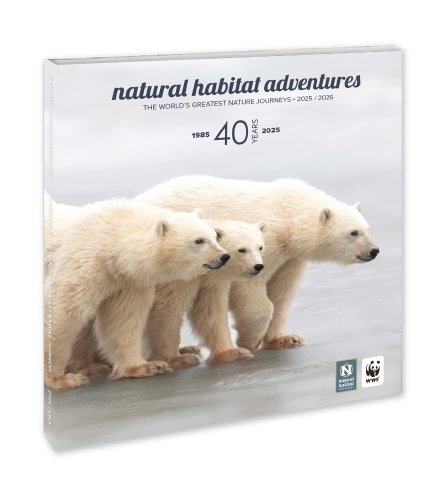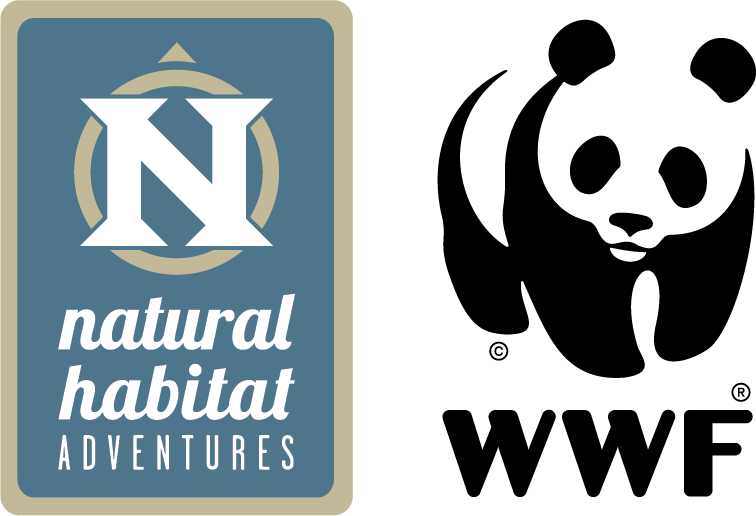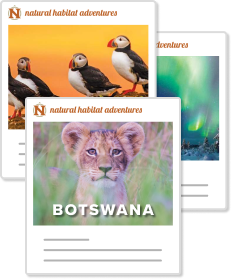Pollinators are nature’s essential workers, ensuring the survival of countless plants and animals while supporting food systems. Nearly 90% of wild flowering plants and 75% of global crops rely on pollinators for reproduction.
While many pollinators hibernate through the winter, some embark on extraordinary migrations to escape the cold and find new sources of nectar and pollen. Monarch butterflies may be the most well-known of these migrations. These journeys—spanning continents and ecosystems—are a testament to nature’s ingenuity.
Here are nine awe-inspiring migrations and where these pollinators spend their winters:

1. Monarch Butterflies: The Monarch’s Mexican Retreat
Monarch butterflies are celebrated for their epic migrations, with some populations traveling up to 3,000 miles. Each fall, millions of monarchs converge in Mexico’s high-altitude forests, where a unique microclimate allows them to conserve energy during their dormancy. These forests also play a critical role in sheltering them from predators and cold weather.
Where they migrate: From southern Canada and the U.S. to central Mexico.
Overwintering location: The oyamel fir forests in the mountains of central Mexico.
Challenges: Deforestation and climate change are shrinking these vital overwintering sites. Additionally, the monarch’s dependency on milkweed—a plant increasingly lost to agricultural expansion and pesticide use—has led to an 80% decline in their population over the past three decades.
Fun fact: Monarchs use an internal compass based on the Earth’s magnetic field and the position of the sun to navigate, a feat for an insect weighing less than a paperclip.

2. Ruby-Throated Hummingbirds: The Gulf Crossers
These tiny birds, weighing less than a nickel, undertake one of the most impressive migrations of any pollinator. To prepare, ruby-throated hummingbirds consume enough nectar and insects to nearly double their body weight, fueling their non-stop flight over the Gulf of Mexico, which can last up to 18 hours.
Where they migrate: From the eastern U.S. to Central America, crossing the Gulf of Mexico.
Overwintering location: Tropical forests in countries like Costa Rica.
Challenges: Habitat loss along migratory routes and in overwintering areas threatens their survival. Conservation efforts in Costa Rica and other Central American countries are crucial for maintaining their winter habitats.
Fun fact: Ruby-throated hummingbirds beat their wings up to 80 times per second and can fly up to 23 miles per day.

3. Lesser Long-Nosed Bats: The Desert Nomads
Lesser long-nosed bats are nocturnal pollinators that follow a “nectar corridor” through desert ecosystems, feeding on blooms of agave and cacti. They play a vital role in pollinating plants foundational to desert biodiversity, including species critical to tequila production.
Where they migrate: From the southwestern U.S. to central and southern Mexico.
Overwintering location: Caves in Mexico’s desert regions.
Challenges: Habitat destruction and agricultural practices that prevent agave from flowering are significant threats. Conservation efforts, such as planting flowering agave along migratory routes, are essential. (WWF)
Fun fact: Each night, a single bat can visit hundreds of flowers, transferring pollen over distances of up to 60 miles.

4. Painted Lady Butterflies: Global Nomad Pollinators
Painted lady butterflies undertake one of the most widespread migrations, with some individuals covering distances of 7,500 miles. Their movements are influenced by weather patterns, particularly rainfall, which determines the availability of host plants.
Where they migrate: From North America to northern Mexico and Central America, and between continents in other parts of the world.
Overwintering location: Warmer climates, including Mexico and North Africa.
Challenges: Habitat fragmentation and pesticide use threaten their migration routes and breeding grounds. (WWF)
Fun fact: Unlike monarchs, painted ladies remain active during the winter, feeding and breeding in warm climates.

5. Rufous Hummingbirds: The Western Trailblazers
Rufous hummingbirds undertake long migrations, navigating through the western U.S. while feeding on flowers along the way. Despite their small size, they are known for their aggressive nature, often defending feeding territories even during migration.
Where they migrate: From as far north as Alaska to Mexico and Central America.
Overwintering location: Mexican cloud forests.
Challenges: Climate change is altering the timing of blooms, creating mismatches between flower availability and migration schedules.
Fun fact: Rufous hummingbirds can fly nearly 4,000 miles round-trip during their migrations.

6. Hawk Moths: The Night Flyers
Hawk moths, such as the silver Y moth, migrate south in search of flowering plants. As nocturnal pollinators, they play a vital role in fertilizing night-blooming flowers that depend on their long tongues for effective pollination.
Where they migrate: From northern Europe to the Mediterranean.
Overwintering location: Warmer southern regions.
Challenges: Climate change disrupts the timing of their migrations, leading to mismatches between moth arrivals and flower blooms.
Fun fact: Some hawk moths can detect the faint scent of nectar from several miles away, even in the dark.

7. Long-Tailed Sylphs: South American Gems
This striking South American hummingbird moves vertically rather than over long distances, descending to warmer, lower-altitude habitats during colder months. Their altitudinal migrations ensure access to blooming flowers year-round.
Where they migrate: Seasonally within the Andes.
Overwintering location: Lower-altitude cloud forests.
Challenges: Deforestation in the Andes threatens both high- and low-altitude habitats.
Fun fact: Male long-tailed sylphs have iridescent tails that can grow up to three times their body length.

8. Globe Skimmer Dragonflies: Pollinating Predators
Although not traditional pollinators, globe skimmer dragonflies feed on nectar during their migrations, playing an incidental role in pollination. They hold the record for the longest insect migration, traveling over 11,000 miles round-trip.
Globe skimmers are primarily found in Africa during the early winter months, particularly in areas with warm temperatures and access to wetlands or water bodies. These locations provide the right conditions for them to breed and lay eggs, as their larvae develop in temporary water sources created by seasonal rains. Their presence in Africa coincides with the wet season when rainfall creates shallow pools that are ideal for their aquatic larval stage.
Where they migrate: Between India, Africa and Southeast Asia. On a Green Season safari in December or January, you might encounter a Globe Skimmer Dragonfly.
Overwintering location: Coastal wetlands and tropical regions.
Challenges: Coastal wetlands, which are critical for refueling, are under threat from development and climate change.
Fun fact: Globe skimmers are the only known pollinators to cross open oceans, using wind currents to aid their journey.

9. Black-and-White Ruffed Lemurs: Madagascar’s Fruitful Migrants
These critically endangered lemurs act as pollinators while feeding on nectar-rich flowers, transferring pollen with their long snouts and fur.
Where they migrate: Seasonally within Madagascar’s rainforests.
Overwintering location: Forest areas with abundant flowering trees.
Challenges: Habitat destruction and hunting pose severe threats to their survival. (WWF)
Fun fact: Lemurs are the largest pollinators in the world, demonstrating that pollination isn’t limited to insects or birds.
Protecting Migratory Pollinators
Each of these migrations highlights the interconnectedness of ecosystems. Preserving nectar corridors and winter habitats is crucial for the survival of these pollinators—and the plants and ecosystems that depend on them. By supporting conservation initiatives, planting native flowers, and protecting critical habitats, we can help ensure these incredible journeys continue to inspire future generations.

Nat Hab Chief Sustainability Officer © Court Whelan
Pollinator Conservation Success Stories
Despite these challenges, there have been notable successes in protecting migratory pollinators, demonstrating that conservation efforts can yield impactful results. These achievements highlight the importance of strategic action and public support in ensuring the survival of pollinators.
- Monarch Butterfly Biosphere Reserve: Conservation of the oyamel fir forests in central Mexico has helped stabilize some overwintering monarch populations, offering a sanctuary for these iconic pollinators during their annual migration.
- Agave Restoration for Bats: Programs planting flowering agave along migratory corridors in Mexico have supported lesser long-nosed bats, ensuring the continuity of their “nectar corridor” through the desert ecosystem.
- Costa Rica’s Pollinator-Friendly Practices: By protecting cloud forests and promoting sustainable tourism, Costa Rica has safeguarded critical habitats for hummingbirds and butterflies, encouraging biodiversity to thrive.
- Pesticide Bans and Native Planting Initiatives: Cities and communities worldwide are adopting pollinator-friendly practices, such as reducing pesticide use and planting native flowers, to provide vital resources for migratory species.
These successes underscore the power of targeted conservation efforts, proving that with the right support, migratory pollinators can overcome the odds and continue their essential work of sustaining ecosystems worldwide.

© Court Whelan
Looking to Join Pollinators in Paradise?
Exploring the overwintering habitats of migratory pollinators offers a unique glimpse into the intricate balance of our planet’s ecosystems. Nat Hab provides immersive experiences that allow travelers to witness these natural phenomena firsthand. Here are five places Nat Hab visits where these pollinators overwinter:
Kingdom of the Monarchs and Monarch Butterfly Photo Expedition: Walk amongst millions of monarch butterflies as they blanket the oyamel fir forests during their winter sojourn. This journey offers an intimate look at one of nature’s most remarkable migrations.
Experience the lush rainforests and misty cloud forests of Costa Rica, home to a dazzling array of pollinators, including hummingbirds and butterflies. In places like Tortuguero and the Osa Peninsula, encounter the vibrant biodiversity of tropical ecosystems, where pollinators thrive among towering trees and colorful flowers, sustaining the region’s delicate balance of life.
Madagascar Wildlife Adventure & Photo Expedition: Journey into Madagascar’s enchanting rainforests to meet the black-and-white ruffed lemurs, the world’s largest pollinators. These fascinating primates contribute to the reproduction of rare endemic plants as they follow seasonal fruiting patterns. Explore the island’s unique biodiversity and the ecosystems that make Madagascar a world treasure.
Explore the Galapagos Islands on Galapagos Discovery: The Nat Hab Experience. Migratory birds and insects play a vital role in the delicate ecosystems we encounter on this adventure. Experience intricate natural processes that sustain life on these remote volcanic islands.
These expeditions provide the opportunity to witness the remarkable journeys of migratory pollinators and to understand the critical importance of preserving their habitats.

Nat Hab Guests observe migratory seabirds in the Galapagos Islands © Nat Hab Expedition Leader Colby Brokvist



























